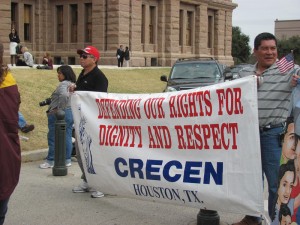Racism persists as long as we don’t try to understand each other
|
I was born in Ciudad Juarez Mexico, next door to El Paso, Texas. My family and I moved to El Paso in 1997 for better work opportunities,education, and a better standard of living. I attended U.S. public schools from third grade through high school, and then went on to study at the community college level, first in El Paso and then in Lubbock. When we moved across the border from Mexico to the U.S, I didn’t notice much difference in culture. People still spoke Spanish to me, we continued to celebrate the same holidays, including el Dia de los Muertos and Cinco de Mayo.

